Unlocking the Potential: Why You Should Use an Event-Driven Architecture
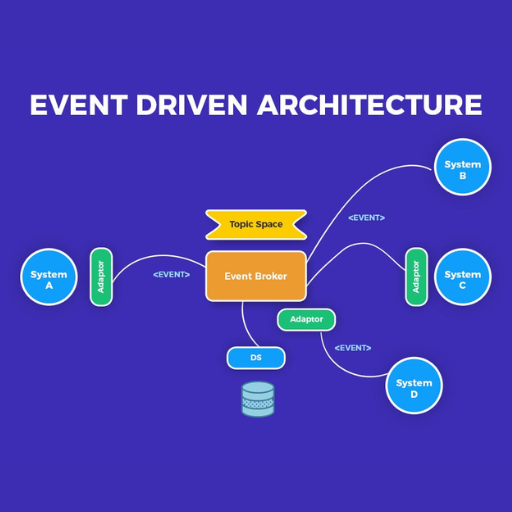
Event-driven architecture (EDA) allows computer systems to respond to real-time events. In modern software development, EDA is a powerful architectural design that enhances flexibility, responsiveness, and scaling in distributed systems. EDA improves systems by simplifying complex workflows, resulting in better performance and easier integration. In this blog, we will study the fundamental concepts of event-driven architecture, consider its key benefits, and discuss its practical applications in detail. As we move forward, it will become evident why businesses and developers are adopting EDA as a foundational architectural style for building dependable and resilient systems. If you are new to event-driven design, looking for advanced insights, or some middle ground, this guide will serve as a one-stop introduction to unlock event-driven architecture.
What is an Event-Driven Architecture?
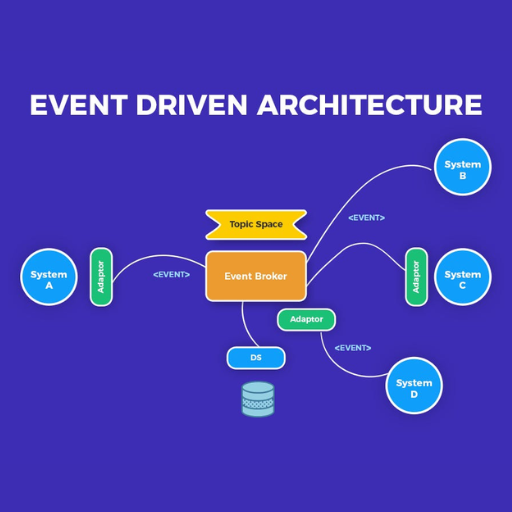
An Event-Driven Architecture (EDA) is a system design model where the components of a system communicate and respond to various captured discrete changes in state, referred to as events. Unlike the traditional request-response approach, EDA emphasizes the need to respond to events as they happen. This makes systems more adaptable, scalable, and responsive. EDA usually consists of producers (who emit events), consumers (who handle events), and an event broker that enables seamless and decoupled communication between services. Due to the need for agility and real-time processing, EDAs are widely utilized in systems like e-commerce, IoT, and financial services.
Understanding the Basics of Event-Driven Architecture
In simple terms, EDA aims to create systems with real-time responsive functions to events and changes. The application of a request-response model is also linear in design, unlike EDA, which has a dynamic event-triggered system. Applications such as EDA are used in scenarios that require fast-paced response,s such as e-commerce platforms, real-time updates like IoT systems, or constant interchanging financial services. At the end of the day, EDA is about agile scalability, speed, and flexibility in distributed systems.
Key Components of EDA
- Event Producers
Event producers create or trigger events that can be in the form of actions taken by users, changes in the state of a database, or signals from IoT devices. For example, in an e-commerce system, actions such as adding an item to a cart or completing a purchase function as events produced in the system.
- Event Consumers
An event consumer is a system or service that subscribes to certain events and processes them. They execute pre-defined business logic or, based on event occurrences, update state systems. As an example, sending a confirmation email after a transaction is completed is the function of an event consumer.
- Event Brokers
As the name suggests, event brokers control the flow of events from the producers down to the consumers and vice versa. They isolate the producers from the consumers, giving leeway for the systems to scale independently. Some of the popular event brokers are Apache Kafka, RabbitMQ, and AWS EventBridge. These brokers ensure the delivery of the event in a timely and dependable manner with low latency.
- Apache Kafka: High throughput when it comes to processing large amounts of data in real time.
- RabbitMQ: Offers support for many different messaging protocols. Better suited for lower-latency, smaller tasks.
- AWS EventBridge: Allows for easy linking to AWS services and streamlines workflows in the cloud for event-driven architectures.
- Event Processing
An event is something that can be processed as an action, which can be performed through any analysis steps leading up to it. There are 3 types of event processing:
- Simple Event Processing: Obtains a single event and performs a predefined action without any additional analysis.
- Stream Processing: Event processing takes place, for example, continuously, requiring real-time computation in monitoring or analytics dashboard usage.
- Complex Event Processing (CEP): A more advanced type of event processing that refines data from different sources, establishing patterns of actions that should be undertaken based on this data. An example would be detecting fraud in financial transactions.
- Event Metadata and Schema
Event-driven architectures are flexible and robust because of systems associated as components. These systems seamlessly communicate with each other.
In general, an event will have both metadata and a schema that is defined, all to keep track of data kept in the systems. Some parameters, which are the core requirements, are:
- Timestamp: When the event occured
- Event Type (nature): Purchase, update, deletion, etc.
- Occurrence: Data that has been stored with the event.
Event schemas are a very important structure which metadata needs to comply to allow multiple event-driven architecture systems interact without concern about constantly designing a new system every time a new source becomes available.
How Event Processing Works
Event processing is the real-time capturing, analyzing, and responding to events as they occur. Events are recorded with important metadata such as timestamps, event type, and payload. An event processing system will ingest the data and deliver it to the appropriate services, where corresponding actions are triggered. Every distributed system executed within a given infrastructure is controlled by a set of governing rules or patterns, also known as event handling, checking event order, and calculating the complete system response time. Through an event streaming platform or middleware, organizations achieve better communication and swift decision-making across their infrastructure.
Why Should You Use an Event-Driven Architecture?
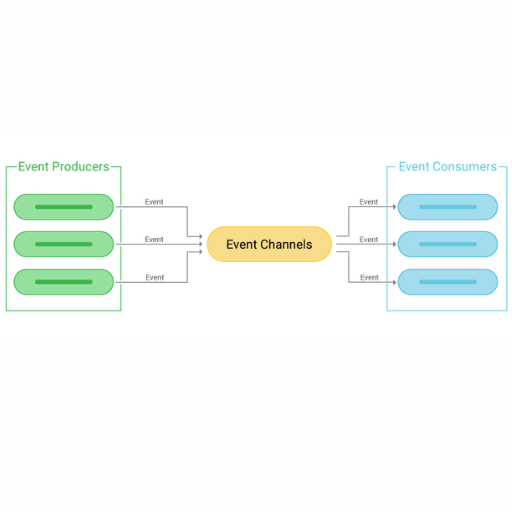
Changing requirements and increasing workloads from users’ requests need to be accompanied by quick decisions from infrastructure managers. Event-driven architecture, or EDA, serves advanced systems offering a wider set of functionality. EDA allows for semi-autonomous and full autonomous components that operate independently of other components for entire independent operation or to accomplish a single showcase goal, which results in agility and reduced complexity. Adapting EDA turns out to be beneficial to enhance organizational operational effectiveness, speed up decisions, and cope with changes easily.
The Benefits of Event-Driven Architecture
Building modern, scalable systems has become significantly easier with the introduction of Event-Driven Architecture (EDA). The prominent EDA improvements include:
- Scalability and Flexibility
The component level decoupling in the EDA approach allows greater independence amongst subsystems, leading to efficient scaling of systems. This also leads to horizontal scaling, meaning individual services within a system or application can be expanded to meet increasing demand without impacting the rest of the system. For example, streaming platforms such as Apache Kafka or AWS Kinesis are used to orchestrate the processing of vast amounts of events in real time, which ensures data is processed seamlessly.
- Real-Time Processing
EDA systems are superior in terms of processing data flows as they happen, which allows for instantaneous data flow. This is great for applications such as fraud detection, analyzing the stock market, and IoT sensor data aggregation, where real-time data insights are critical. For instance, Kafka can process event throughput of well over 1 million messages per second with low latency, depending on system configuration.
- Resilience and Fault Tolerance
Since EDA is based on asynchronous communication with decoupled components, it has built-in fault tolerance support. When one component fails, the rest are not impacted. Furthermore, message brokers such as RabbitMQ and even Kafka have durability capabilities, like persistent event logs in the former, that ensure no data is lost during failures.
- Improved Development Agility
EDA promotes agile development as teams can work separately on several components and only need to communicate based on event contracts. This improves cycle speed and simplifies updates for quicker evolution to changing business needs.
- Cost Efficiency
Aligned with EDA principles, cloud services on a pay-as-you-go basis allow organizations to reduce infrastructure costs by providing resources only when events occur. Such models are offered by platforms like AWS Lambda or Azure Functions where computation resources are triggered by events.
Other Considerations Technically include:
- Throughput: Verify that the event broker can handle the needed message rates (e.g., Kafka frequently manages millions of messages per second).
- Latency: Real-time systems require low (<10 ms) latency.
- Durability and Availability: Look for adequate availability (at least 99.99% uptime) and event durability features such as replication.
- Compatibility: Check for required communication support. AMQP and MQTT support and even HTTP is needed based on system requirements.
Utilizing these advantages, organizations can develop systems that are resilient, adaptive, and ready for the future to meet the demands of modern applications.
When Should You Use an Event-Driven Architecture?
Choose an Event-Driven architectural pattern when you expect your system to have a very high scale, responsiveness, or be able to process real-time events. Some example use cases include building microservices, enabling asynchronous communication, or processing streams of data in real-time, like in e-commerce systems, IoT, or financial systems. It is also useful in systems that need to adapt to shifts in requirements because of its loose coupling and flexibility.
Real-World Examples of Event-Driven Architecture
A real-world example would be in eCommerce websites where users can independently place orders, make payments, and update inventory asynchronously — all at the same time. While orders and payments might be processed alongside lots of inventory changes. Everything is done faster and at a greater scale to handle large numbers of users concurrently interacting with the system. Some technical parameters would include implementing message brokers for event streaming and queueing, like Apache Kafka or RabbitMQ, and microservices organized by APIs for modularity, along with using RESTful communication.
Similar systems apply to smart home devices as IoT where sensor-driven communication can send data whenever any change occurs such as the occurrence of motion, or something as subtle as temperature shifts. Some of the parameters include lightweight communication protocol like MQTT, edge computing devices that do some preprocessing, and a central processing unit that listens and sends reply events instantly.
Finally, event-driven architecture is applicable in financial systems for stock trading and fraud detection. In order to reduce latency, trade executions and flagged anomalies are processed as they occur. Here, the technical components may consist of low-latency messaging systems, complex event processing (CEP) engines for pattern analysis, and robust fault-tolerance mechanisms to ensure reliability during high-volume data streams.
How Does Event Flow Work in Event-Driven Architecture?

In an event-driven architecture, the diagram shows a certain flow order that must be followed. It begins with the producer or event source generating an event, which could be a user action or a system update. The event is then sent via a messaging channel or event bus to the appropriate consumers (and/or event handlers) that need it. After receiving the event, the consumers take the appropriate actions, which may include updating a database, setting off workflows, and notifying users. By allowing systems to respond to occurrences as they take place, this architecture facilitates loose coupling, scalability, and real-time responsiveness where components do not need to communicate with each other directly.
Role of Event Producer and Event Consumer
As an event producer, I have to create and fire events when a significant action or state change occurs in my system. This may include creating events whenever a user places an order or completes a transaction. These events are simple structured data packets containing all the necessary information about the occurrence, which gets sent to the event stream/bus for further processing.
Also, as an event consumer, it is my responsibility to attend related events and take necessary actions. A possible action is updating a database, sending notifications, or resolving a process based on the content of the event. This architecture has clearly defined boundaries between producers and consumers, which guarantee scalability, flexibility, and efficiency, enabling systems to work autonomously yet in synchronization in real time.
Managing Event Streams and Event Channel
To concentrate on design, tools, and particular technical parameters, use principles that ensure appropriate event stream and event channel management. Below are some brief considerations and answers:
- Event Stream Management
Event streams consist of ordered sequences of events emitted by the producer. Proper event management concerns:
- Partitioning: Allocate events to multiple partitions for enhanced scale, ease of access, and management (e.g., Apache Kafka has configurable partitions).
- Retention Period: Establish the length of time events remain in the stream, i.e., 7–30 days or longer, depending on use case.
- Sequence: Ensure that every event has an associated and unique identifier (ID) or timestamp that marks its issuance.
- Event Channel Configuration
An event channel is an intermediary that joins producers and consumers of events, usually through a message broker (or middleware). Important parameters to configure are:
- Protocol: Apply correct communication protocols, like AMQP, HTTP, or gRPC.
- Throughput: Set the limitations of events in seconds that the channel can manage without faults on the system parameters.
- Fault Tolerance: Enact retries or dead-letter queuing for messages that fail to be delivered.
- Security: Set encryption (i.e., TLS/SSL) and other authentication methods (such as OAuth) associated with access control.
- Key Tools/Technologies
- Message Brokers: Includes but is not limited to Kafka, RabbitMQ, AWS SQS, and Google’s Pub/Sub.
- Monitoring & Metrics: Use observability tools such as Prometheus or Grafana that enable monitoring latencies, error rates, and throughput.
With effective configuration of parameters according to principles provided, event-driven architecture can efficiently sustain workload performance and reliability.
Understanding Event Message and Event Notification
Both Event Message and Event Notification belong to event driven architecture which is value oriented, but each serves a different role in the system.
- Event Message
An event message relays specific, detailed information about an incident that has taken place. Usually, it has the complete information that a downstream service or component may require to act or use a decision.
- Example Use Case: An event message with transaction information (amount, timestamp, user ID) might be sent by a payment processing system.
- Technical Parameters:
- Payout Size: Ensure lightweight payloads (<256 KB recommended for high throughput scenarios) for faster processing.
- Schema: For ease of connection, standard serialization formats such as JSON or Avro should be adopted.
- Reliability Mechanisms: As a best practice, enforce idempotency for duplicate processing restrictions.
- Event Notification
An event notice is an example of a simplistic pointer that is sent to mark an event's occurrence. Instead of elaborate data, all it carries is info that serves as instructions to retrieve additional details as deemed necessary.
- Example Use case: A file upload completion signal sent by a notification service, which is followed by file processing by another service.
- Technical Parameters:
- Message Size: Relatively smaller (<64 KB recommended) than most types since all it carries is the time and type of event.
- Use with APIs or message retrieval systems (e.g., REST or gRPC endpoints) and Notifications configured will result in better polling efficiency.
- Minimize delay and restriction based on use case (e.g., sub-second latency for real-time applications) to ensure prompt delivery with low latency.
Primary Divergences:
- Event messages are actionable and laden with data, while notifications are light and do not require action on the event.
- Unlike messages, notifications often need additional context to be fetched and processed, which is not the case for messages, as all the context is provided.
Event driven architecture harness the power of modern solutions while balancing efficiency, scalability and usability by appropriately adjusting parameter distinctions for each element.
How is Event-Driven Architecture Used in Microservices?
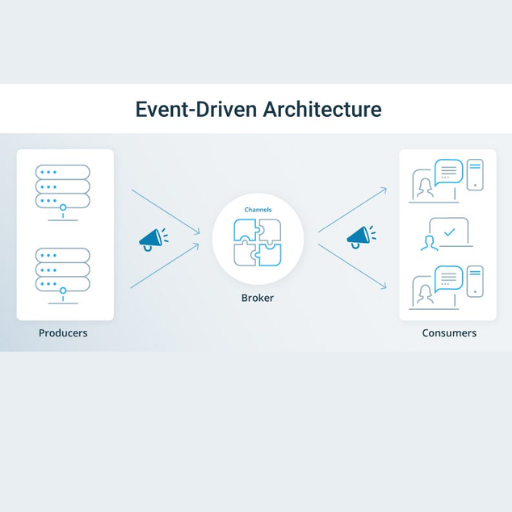
Using an Event-Driven Architecture (EDA) provides an Anchor to microservices as it helps eliminate silos between services. Employing events as the primary form of communication makes it possible for microservices to function independently yet maintain a minimal connection. Services can use events to respond dynamically to updates and changes as they occur, further deepening the system's responsiveness and scalability. EDA also reduces the direct dependencies in the services since the services send events through messaging systems like Kafka or RabbitMQ. This makes architecture more fault-tolerant as the failure of one service does not cause other services to halt, which is dependent on a microservices system’s efficiency.
Integrating Microservices with EDA
To me, attaching EDA to the microservices backbone puts increased emphasis on elasticity, scalability, and fault tolerance. Using Kafka, RabbitMQ, and other messaging systems helps achieve the goal of loosely coupled services, as microservices communicate with each other via events. Each service is capable of responding to changes in its environment independently without having to wait for other services. This approach assists in scaling by allowing workloads to be decoupled while simultaneously increasing resilience as problems in one service do not lead to failures in other services. Efficient management of asynchronous tasks and scaling of complex distributed systems is achieved when EDA is adopted.
Scalability and Flexibility in Event-Driven Systems
As we noted in previous sections, event-driven systems facilitate scalability and flexibility through asynchronous communication by independent services. Systems are structured around event producers, brokers, and consumers, which allows the decoupling of components in each system so that they can be more autonomous in achieving their tasks. With this design, bottleneck creation is prevented, and the produced, brokered, or consumed parts may be added as needed, improving horizontal scalability aligned to demand.
Main Benefits:
- Dynamic Scalability:
- One of the key features of event-driven architectures is dynamic scalability achieved by spawning multiple instances of consumers or producers to deal with increased event loads.
- Cloud-based services such as AWS Lambda or Azure Functions provide these solutions and allow the auto-scaling based on the volume of events received.
- Reduced Latency:
- As noted with asynchronous processing, the system does not wait for a response for each of the events, which cuts down on waiting time.
- Message Brokers of event processing, such as Apache Kafka or RabbitMQ, are now able to deliver real-time message processing.
- High Flexibility:
- The distribution of services allows them to function on their own, therefore making the system easilier updatable, replacable, or expandable to new components without redoing the entire setup.
- Various formats such as XML and JSON, Avro, or Protocol Buffers ensure interoperability of flexible data structures schema.
Technical Parameters:
- Throughput of Message Brokers:
- With properly optimized clusters, Apache Kafka is now claimed to support over 1 million messages per second.
- Latency:
- RabbitMQ allows messages to be delivered with latencies ranging from 1 ms to 10 ms at best, provided they are configured correctly.
- Event Volume:
- AWS EventBridge and similar systems can be relied upon to manage millions of events in a day with marginal losses in reliability.
- Horizontal Scaling:
- Kafka enables the addition of more consumers to a group within a topic and allows parallel consumption.
This enables event-driven architectures to be used for applications that require real-time processing, like IoT systems, online gaming, as well as dynamic financial transactions, all while maintaining scalability and resilience.
What are the Advantages of Event-Driven Architecture?
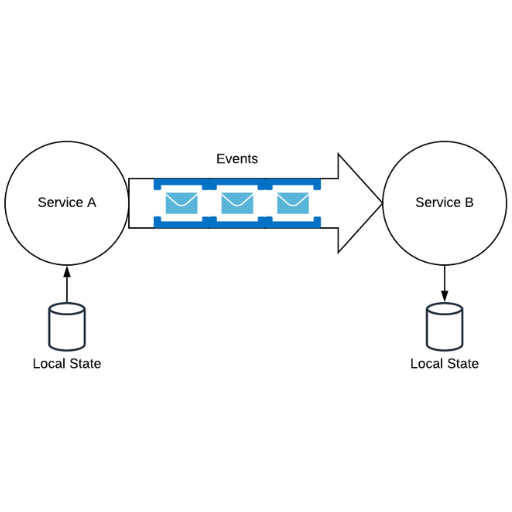
Let's take a look at each of the advanced features:
- Real-time Processing: Allows an instantaneous reaction to resources, which is vital for financial systems or IoT devices.
- Scalability: Vertical scaling and loose coupling of elements allow easy adaptation to varying system loads.
- Resilience: Inbuilt recovery without interrupting the use of system services is remarkably speedy due to fault-tolerant design.
- Flexibility: Updates and modifications to one part of the system do not impact any other part, enhancing system development.
- Improved Performance: The processes engage in responding to events in a system are done in a non-concurrent manner, eliminating blockages
Improved System Architecture and Responsiveness
When designing a system, I strive for modularity and scalability using a microservices approach. This allows for system-wide updates to be replaced with the simpler paradigm of updating components, which significantly improves system response time. Furthermore, performance within varying traffic levels is sustained through the use of automatic scaling and load distribution features included within cloud services. To improve system responsiveness, delay-inducing factors such as latency are minimized through the integration of throttling, stochastic parallelism, and caching, ensuring maximum traffic endurance. These measures bolster system capability and enhance demand adaptability, responsiveness, and efficiency.
Enhanced Event Processing and Complex Event Processing
To elevate sophisticated event processing and basic event processing, I utilize powerful frameworks such as Apache Flink and Apache Kafka, which offer extreme versatility alongside high reliability for accommodating real-time stream data. The implementation of event-driven architecture ensures the unification of data flow and integration between the systems and services. Some of the core technical requirements include ensuring that processing latency remains below a millisecond, throughput rests in the range of millions of events per second, and constant increases in data volume can be catered to. Furthermore, advanced decision making in complex shifting environments enabled by swift correlation among intricate multifaceted events is achieved through the use of windowing and pattern matching. Such techniques enable intricate event pattern processing with sustained high adaptability and performance.
Efficient Event Broker and Event Router Utilization
Keeping optimum data flow and high performance in event-driven systems, including complex architectures as microservices, relies heavily on the efficient usage of event brokers and routers. Here are the heading listing considerations with relevant parameters:
- Communication Delay
- Event Delivery Latency: Less than/0.50.5 ms θθ
- Tactical Application: Guarantees prompt queueing and timely routing of event emission so critical applications can operate in true real-time (close to real-time).
- Grand Throughput
- Event Throughout: Millions of events per second. ψψ
- Tactical Application: Shutdown of essential data pipelines due to high-speed data influx should be avoided in well-architected large-scale systems.
- Elastic Dynamics
- Option: Further horizontal and/or vertical scaling can be added and autonomously adjusted.
- Tactical Application: Scaling without manual actions enables faster burnout control on systems and allows response to fluctuations during active events in an effortless manner.
- Active Partition Support
- Feature: Distributed Eventing Relaxation (partitioned arrays), keyed by: User ID, geographic coordinate.
- Tactical Application: Reach equilibrium load-balanced processing by node/cluster economization, a distributed algorithm.
- Reliable Delivery
- Optional: Settable Quality of Service (also works on } \textf{permitted} Guarantors): at-most-once delivery, at-least-once delivery, exactly-once delivery maintain.
- Tactical Application: Pop beamed approaching horizons, reliable delivery mechanisms with event emission conditions that require no lean-back operating, rely on specified emitted events.
- Highly Enhanced Routing
- Stipulations: Conditional routing, various filtering events with intricate details.
- Tactical Application: Emission & event-driven routing to achieve marked simplification of handling steps in pipelines and a better funnel-smarter aspect, activated nodes' advanced control.
Incorporating these parameters into event brokers and router configurations allows systems to obtain optimal performance, reliability, and scalability tailored to evolving and highly demanding conditions.
References
- The Benefits of Event-Driven Architecture - PubNub
- A Guide to Event-Driven Architecture Pros and Cons - Solace
- Event-Driven Architecture: Benefits, Challenges, and Examples - Medium
Frequently Asked Questions (FAQ)
Q: What is an event-driven architecture?
A: An event-driven architecture is a software design pattern that focuses on the production, detection, consumption, and reaction to events. It enables systems to respond in real-time to changes or events within a system, making it highly scalable and flexible.
Q: Why should you use an event-driven architecture?
A: You should use an event-driven architecture because it allows for better scalability and flexibility, making it easier to handle large volumes of events and process them in parallel. It is particularly useful in environments where real-time processing and responsiveness to events are important.
Q: When should you use event-driven architecture?
A: You should use event-driven architecture when you need to build applications that require real-time processing and responsiveness to incoming events. It is ideal for systems that need to scale dynamically or handle unpredictable loads.
Q: What are the common components of an event-driven architecture?
A: Common components of an event-driven architecture include event producers, event consumers, event processors, and event channels. These components work together to handle event stream processing and ensure that each type of event is processed appropriately.
Q: How does an event-driven architecture enable better scalability?
A: An event-driven architecture enables better scalability by allowing components to process events in parallel and independently. This architectural pattern allows systems to scale horizontally by adding more event processors as needed to handle increased loads.
Q: What are some examples of event-driven applications?
A: Examples of event-driven applications include online payment processing systems, real-time analytics platforms, notification services, and IoT device integration. These applications benefit from the ability to respond quickly to events as they occur.
Q: How does event-driven architecture differ from traditional architectures?
A: Unlike traditional architectures, where processes are often tightly coupled and synchronous, event-driven architecture decouples event producers and consumers, allowing for asynchronous communication. This enables more flexibility and scalability in handling events.
Q: What is simple event processing in the context of event-driven architecture?
A: Simple event processing involves detecting an event and triggering a corresponding action or response. This is a straightforward approach within event-driven architecture where each incoming event results in a specific, predefined action.
Q: How does event stream processing work in event-driven architecture?
A: Event stream processing involves continuously capturing, processing, and analyzing a stream of information about events. This capability allows systems to react to events in real-time, improving the overall responsiveness and efficiency of applications.
Q: Can you explain how an event-driven approach handles an event that isn’t necessarily instant?
A: In an event-driven approach, if an event isn’t necessarily instant, the system can queue the event and process it asynchronously. This allows the system to continue functioning smoothly without being blocked by events that require more time to process.